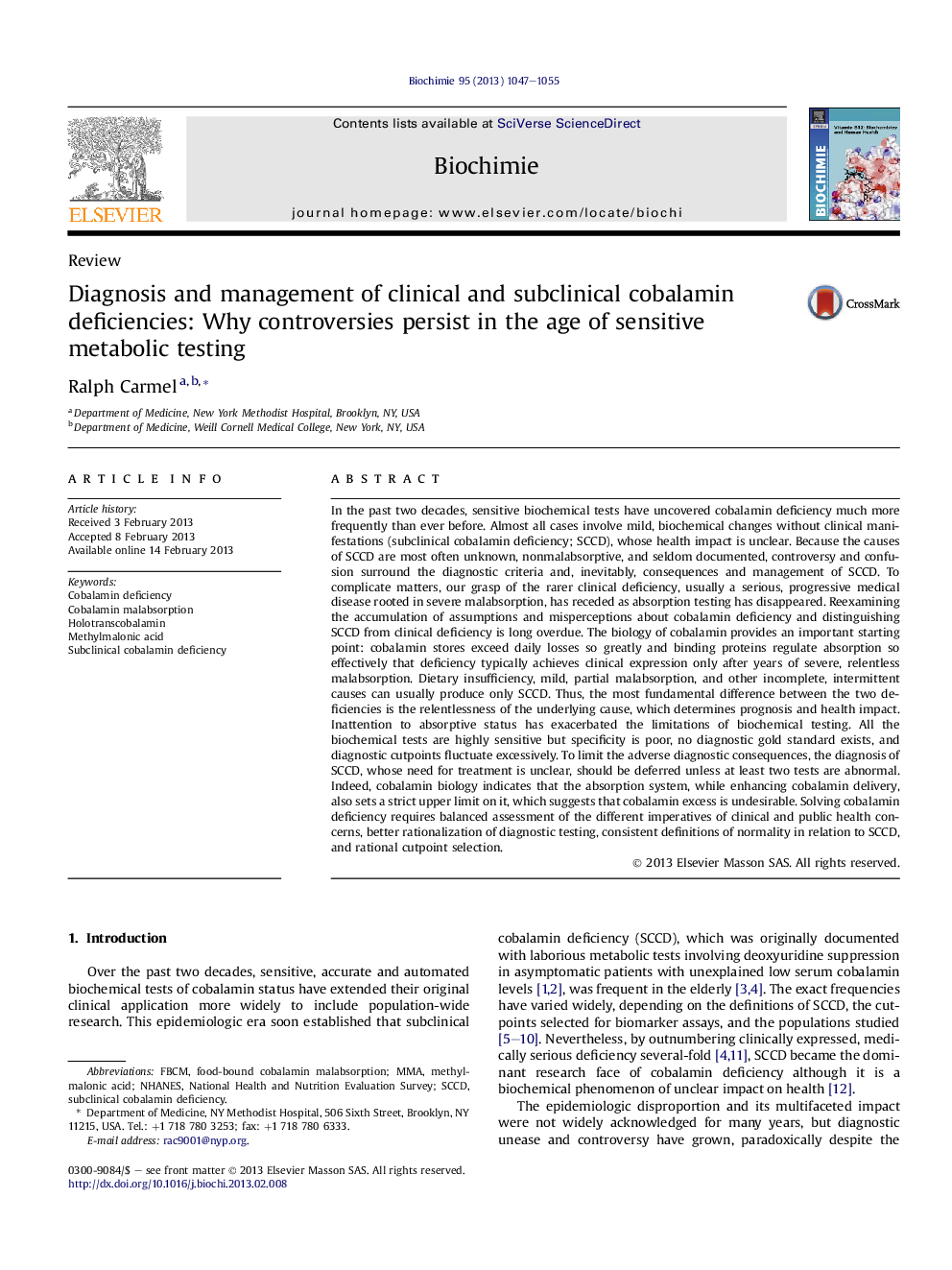| کد مقاله | کد نشریه | سال انتشار | مقاله انگلیسی | نسخه تمام متن |
|---|---|---|---|---|
| 1952189 | 1057190 | 2013 | 9 صفحه PDF | دانلود رایگان |

In the past two decades, sensitive biochemical tests have uncovered cobalamin deficiency much more frequently than ever before. Almost all cases involve mild, biochemical changes without clinical manifestations (subclinical cobalamin deficiency; SCCD), whose health impact is unclear. Because the causes of SCCD are most often unknown, nonmalabsorptive, and seldom documented, controversy and confusion surround the diagnostic criteria and, inevitably, consequences and management of SCCD. To complicate matters, our grasp of the rarer clinical deficiency, usually a serious, progressive medical disease rooted in severe malabsorption, has receded as absorption testing has disappeared. Reexamining the accumulation of assumptions and misperceptions about cobalamin deficiency and distinguishing SCCD from clinical deficiency is long overdue. The biology of cobalamin provides an important starting point: cobalamin stores exceed daily losses so greatly and binding proteins regulate absorption so effectively that deficiency typically achieves clinical expression only after years of severe, relentless malabsorption. Dietary insufficiency, mild, partial malabsorption, and other incomplete, intermittent causes can usually produce only SCCD. Thus, the most fundamental difference between the two deficiencies is the relentlessness of the underlying cause, which determines prognosis and health impact. Inattention to absorptive status has exacerbated the limitations of biochemical testing. All the biochemical tests are highly sensitive but specificity is poor, no diagnostic gold standard exists, and diagnostic cutpoints fluctuate excessively. To limit the adverse diagnostic consequences, the diagnosis of SCCD, whose need for treatment is unclear, should be deferred unless at least two tests are abnormal. Indeed, cobalamin biology indicates that the absorption system, while enhancing cobalamin delivery, also sets a strict upper limit on it, which suggests that cobalamin excess is undesirable. Solving cobalamin deficiency requires balanced assessment of the different imperatives of clinical and public health concerns, better rationalization of diagnostic testing, consistent definitions of normality in relation to SCCD, and rational cutpoint selection.
► Cobalamin biology is dictated by the great excess in the stores-to-daily loss ratio and complete dependence on transport proteins.
► Absorption status determines the prognosis and management of cobalamin deficiencies.
► Subclinical and clinical cobalamin deficiencies differ in many critical characteristics.
► Epidemiologic research concerns subclinical deficiency, with limited applicability to clinical deficiency.
► Specificity is a greater challenge than sensitivity for all biomarkers used to diagnose cobalamin deficiency.
Journal: Biochimie - Volume 95, Issue 5, May 2013, Pages 1047–1055